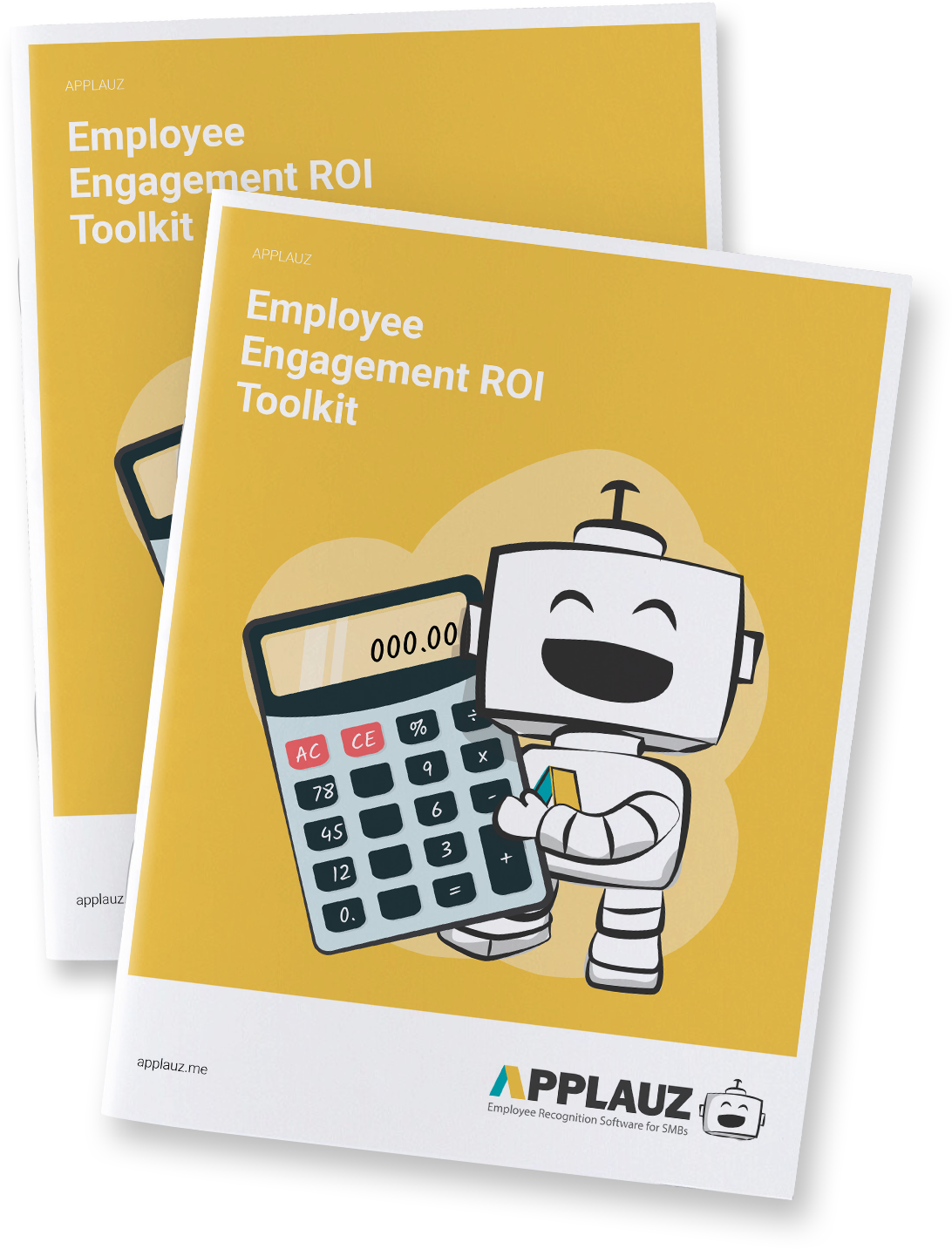Employee turnover is a substantial blow to any business.
Regardless of the stage of your organization, retaining talent has become an increasingly critical objective in 2023.
High employee turnover rates can harm a company's growth, productivity, and bottom line. To help reduce employee turnover--or merely to understand it-- it is important to look at the data. Employee turnover statistics help us understand its causes, costs, and impact on businesses-- and the economy at large.
Think the impact of an employee leaving is merely the cost of a job posting? Think again. Employees leaving means costs of replacement and training and hard-to-measure effects on the remaining employees' morale and productivity. If your company suffers from high employee turnover you are at a disadvantage, if you excel at retention-- the benefits go beyond what can easily be quantified.
But in this article, we are looking to quantify, through employee turnover statistics, the nature of staff churn. By examining employee turnover statistics overall and by specific industries and companies, we shed light on the factors driving employee departures and how they impact businesses—regardless of size.
Employee Engagement ROI Toolkit Find out your Employee Engagement ROI using our helpful calculator
General Employee Turnover Statistics
1. The Average U.S. Turnover Rate is Nearly 50%
- On average, a U.S. company will experience a total separation rate of 47% in its workforce every year for turnover— voluntary and involuntary.
2. Over 45 Million U.S. Workers Quit in 2021 (and More Did in 2022)
- 47.4 million US workers quit in 2021, and over 50 million people quit in 2022.
3. 70 Percent of All U.S. Employee Turnover is Voluntary
- In 2022, quitting accounted for a staggering 70% of all job separations, marking the country’s highest recorded level ever.
4. More Than 4 Million U.S. Employees Leave Their Job Each Month
- In 2022, an average of 4.2 million U.S. employees quit their jobs every month, equating to approximately 2.5 percent of the entire U.S. workforce.
5. More Than 35% of U.S. Employees Who Quit Didn’t Have Another Job Lined Up
- Jobseekers took more risks in 2021, with 36%of employees quitting without securing a new job.
6. The Median Number of Time at a Company is Less than 5 Years
- The U.S. Bureau of Labor Statistics says workers don’t stay at their jobs for long. The BLS has the median number of years that wage and salary workers stay with one specific company is 4.1 years— a number that has remained relatively stagnant since 2018.
7. Burnt Out Employees Are 2x More Likely to Convince Co-Workers to Quit, Too
- Workers who are fed up with working conditions can have cascading effects. Employees are two times more likely to convince a co-worker to quit.
Employee Turnover Cost Statistics
8. Replacing an Employee Can Cost up to 4x Their Annual Salary
- The costs of replacing an individual worker can range from half to four times the employee’s annual salary. That means, if you’re hiring for a job that pays $60,000, you could be spending upwards of $180,000 to fill that role.
9. It Takes up to 2 Years for an Employee to Be Fully Productive in a Role
- On average, new employees typically require one to two years to reach full productivity, leading to potential delays in comparison to previous employees. Losing top performers due to voluntary turnover can have long-lasting impacts on a company's bottom line.
10. Turnover Rates Can Cost a Company Upwards of $2.5 Million Annually
- Even modest turnover rates cost the organization a lot of money when you consider the entire company. A 100-person company that has an average salary of $50,000, could have turnover costs of over $2 million per year.
- Equally astounding, replacing C-level executive positions can cost up to 213% of their yearly salary, making the costs of employee turnover in C-level positions particularly untenable.
Employee Turnover Rates per Industry
Employee turnover varies per industry. Since 2021, while the overall rate has hovered around 47%, here’s a more specific breakdown per sector (in the U.S.):
11. Average turnover rate: 47% (2022)
- Construction: 53%
- Manufacturing: 39%
- Trade, Transportation, and Utilities: 54%
- Information: 37%
- Financial activities: 29%
- Professional and Business services: 63%
- Education and Health services: 38%
- Leisure and Hospitality: 82%
- Government: 20%
12. Average turnover rate: 47% (2021)
- Construction: 57%
- Manufacturing: 40%
- Trade, Transportation, and Utilities: 55%
- Information: 39%
- Financial activities: 29%
- Professional and Business services: 64%
- Education and Health services: 37%
- Leisure and Hospitality: 85%
- Government: 18%
13. Similarly, the following industries have the highest percentage of hiring difficulty:
- Transportation Equipment: 75%
- Health Care Services: 66.3%
- Logistics: 62.2%
- Other Non-Manufacturing: 60.9%
- Other Manufacturing: 60.6%
- Insurance/Reinsurance: 58.0%
- Services (Non-Financial): 57.8%
- High Tech: 56.8%
- Mining & Metals: 53.3%
14. The Fast Food Industry Has an Astoundingly High Turnover Rate
- Fast food employee turnover statistics are eye-popping. The industry has a staggering 147% turnover rate.
15. Retail Employee Turnover in the U.S. is over 50%
- Retail employee turnover statistics are among the highest in the United States. According to a 2023 BLS report, the average retail employee turnover rate in the US is roughly 60%.
Turnover Statistics From Major Companies
16. Amazon’s Employee Turnover Costs the Company $8 Billion
- The giant online retailer has an annual employer turnover rate of 150%, double the industry average. According to leaked documents, employee turnover costs the company and its shareholders $8 billion per year.
17. Meta Experiences an Annual Turnover Rate of About 15%
- Meta, the parent company of Facebook, WhatsApp, Instagram, and Threads has an annual turnover rate of approximately 15%.
- In November 2022, the company reduced its workforce by 13%, cutting 11,000 jobs and enacted a hiring freeze for the first quarter of 2023.
18. The Average Employee Tenure at Apple is Less Than 2 Years
- Apple, one of the largest companies in the world, struggles to retain its employees. The tech company’s average employee tenure is less than two years: only 20 months (1.7 years).
19. United Airlines Has an Employee Turnover Rate of Less Than 10%
- United Airlines says its team members stay on board (pun intended) to “build careers” and has an impressive 7% turnover rate. The airline says it remains a “destination for lifelong careers, with an average tenure of 16 years of service for United employees.”
A Company Culture's Impact on Turnover Statistics
20. Over 30% of New Hires Quit Within the First 90 Days
- A significant portion of new hires (34%) left their job in 2022 within the first 90 days, citing company culture as a key reason for their departure.
21. Toxic Workplace Culture 10x More Likely To Drive Employees Away Compared to Salary
- Toxic company culture is a more significant predictor of turnover than compensation. It's a whopping 10.4 times more powerful in predicting attrition rates within an industry, compared to salary.
22. 3 in 4 Job Seekers Consider Company Culture Before Applying to Jobs
- 79% of U.S. workers say they would consider a company’s mission and purpose before filling out and submitting an application (according to a recruitment marketing study).
23. Over Half of Job Seekers Value Company Culture Over Salary
- 56% of workers say a good workplace culture was “more important than salary” for job satisfaction.
Management, Leadership, and Turnover Statistics
24. Nearly 80% of Employees Believe Strong Leadership Decreases Turnover
- Strong leaders who understand their employees and promote flexibility are more likely to retain talent. In fact, 79% of employees factor “empathetic leadership into decisions to stay at a company.”
25. Regular Employee Feedback Results in 14.9% Lower Turnover
- Companies that conduct regular employee feedback sessions experience a 14.9% reduction in turnover rates.
26. More Than 80% of Employees Would Quit Due to a Bad Manager
- Bad management can prompt employees to consider quitting. In a survey, 82 percent of full-time U.S. employees said they would leave their jobs due to poor management.
27. More Than Half of Quitting Employees Say Management Could Have Prevented Their Departure
- Over half of voluntarily exiting employees (52%) believe that their manager or organization could have taken steps to prevent their departure.
Employee Recognition: Your Not-so-Secret Weapon in the War Against Employee Turnover
Employee turnover statistics provide a comprehensive overview of the dynamics at play within today's workforce. Turnover is not merely a statistic; it represents the ebb and flow of talent within organizations. Each data point serves as a valuable piece of the puzzle, revealing the reasons behind employee departures and offering insights into the strategies needed to reduce turnover and enhance retention.
One key strategy to implement to reduce employee turnover? Introducing a great employee recognition program. Recognizing employees increases their sense of value and feeling that they are being appreciated, increasing their job satisfaction and commitment.
When individuals are recognized for their contributions and achievements, they are more likely to feel engaged and motivated in their roles, leading to higher retention rates.
Employee recognition also fosters a positive workplace culture, improving overall morale and team cohesion. As a result, employees are less inclined to leave their jobs in search of better opportunities, ultimately reducing turnover and contributing to a more stable and productive workforce, and in turn, reducing the chance that your company contributes to the negative turnover statistics of the future.
About the author
Tyler Jadah
Tyler is a freelance writer focused on subjects like talent management, employee retention, and leadership development. Tyler delivers practical advice to help businesses cultivate motivated and high-performing teams.


